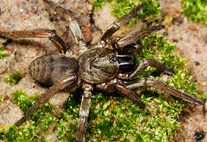Abstract
Bush frogs of the genus Raorchestes are distributed mainly in the Western Ghats Escarpment of Peninsular India. The inventory of species in this genus is incomplete and there is ambiguity in the systematic status of species recognized by morphological criteria. To address the dual problem of taxon sampling and systematic uncertainty in bush frogs, we used a large-scale spatial sampling design, explicitly incorporating the geographic and ecological heterogeneity of the Western Ghats. We then used a hierarchical multi-criteria approach by combining mitochondrial phylogeny, genetic distance, geographic range, morphology and advertisement call to delimit bush frog lineages. Our analyses revealed the existence of a large number of new lineages with varying levels of genetic divergence. Here, we provide diagnoses and descriptions for nine lineages that exhibit divergence across multiple axes. The discovery of new lineages that exhibit high divergence across wide ranges of elevation and across the major massifs highlights the large gaps in historical sampling. These discoveries underscore the significance of addressing inadequate knowledge of species distribution, namely the “Wallacean shortfall”, in addressing the problem of taxon sampling and unknown diversity in tropical hotspots. A biogeographically informed sampling and analytical approach was critical in detecting and delineating lineages in a consistent manner across the genus. Through increased taxon sampling, we were also able to discern a number of well-supported sub-clades that were either unresolved or absent in earlier phylogenetic reconstructions and identify a number of shallow divergent lineages which require further examination for assessment of their taxonomic status.

